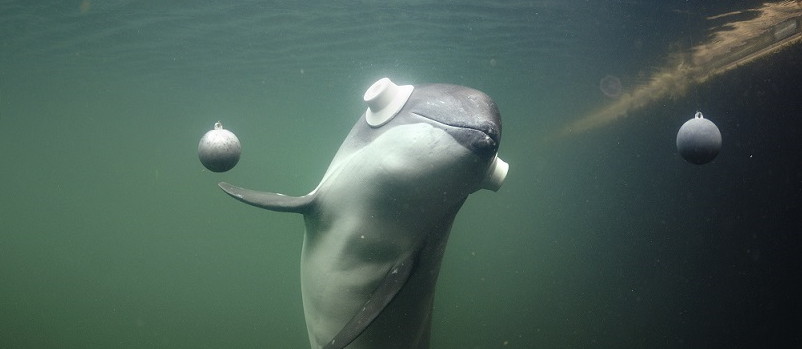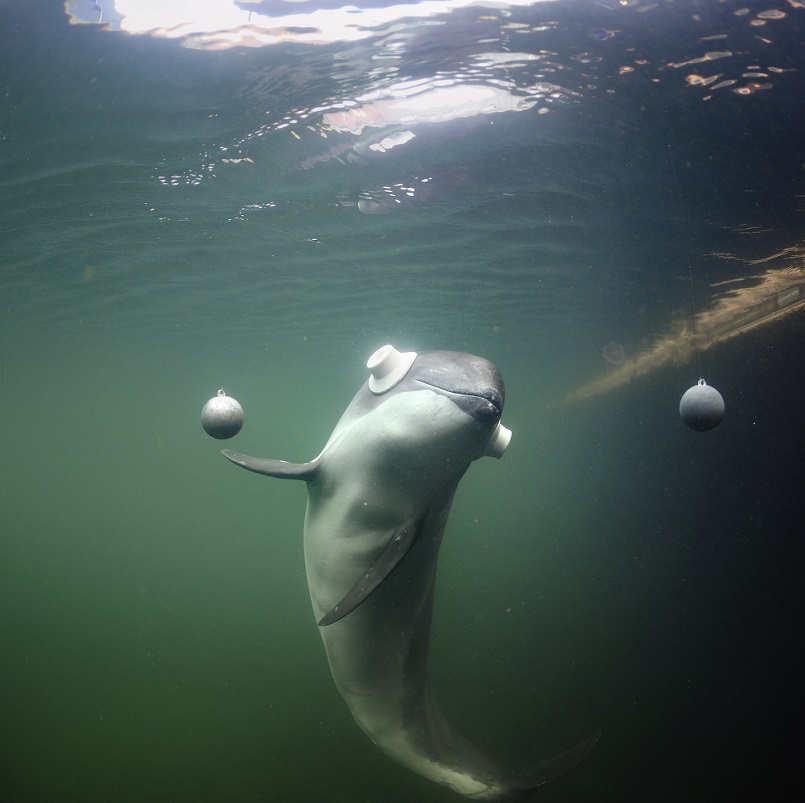
Why do we have to keep animals in captivity?
Confined animals give us important knowledge about behavior that we can use to protect animals in the wild, says biologist Kirstin Anderson Hansen. To ensure that animals in captivity thrive, there are several things you should keep in mind, she explains.
The purpose of keeping animals in captivity has changed over the past 50 years.
Earlier, we primarily used animals in captivity as entertainment. Today, the focus at aquariums and zoos are to a much greater extent to secure important knowledge for the conservation of wild animals.
Knowledge, that we need to protect the animals in the wild, says Kirstin Anderson Hansen, biologist at the Marine Biological Research Centre, SDU and head of training and research at Fjord & Bælt.
- It would be irresponsible of us not to have animals in captivity. All the work we do with our animals, we do to help animals in the wild. The situation in nature is strongly affected by our presence, as biodiversity is deteriorating every single day.
- Animals in human care can be trained to take part in research, and this helps us understand their behaviour, well-being and needs, says Kirstin Anderson Hansen.
Animals must not become lazy
To ensure that animals in human care thrive, there are basically two things to keep in mind; physical and mental needs, she explains.
- Does the animal show the behaviour we want to see? There should be behavioural diversity. The animal should not do the same thing all the time. It must not be too lazy either, she says.
To ensure the best behaviour, animals must be mentally and physically stimulated every day. That is why the grey seals, porpoises, harbour seals and otters at SDU’s Marine Biological Research Centre and Fjord & Bælt are trained daily.
- We have approx. 15 training sessions every day, where the purpose is for the animals is to solve various tasks, such as swimming up onto a scale or solve a relevant research question, she says.
In addition, it is important to ensure their well-being that the animals get the food they need. Not too much and not too little.
- But the most important thing we keep an eye on is their behaviour and their health. If the animals are stressed, you can see it. If their welfare is good, then their behaviour is versatile and natural, they are motivated to eat and are healthy and are interested in training, Kirstin Anderson Hansen says.

At Fjord & Bælt in Kerteminde, porpoises contribute to research on a daily basis. For example, the porpoise Freja lives here, who at 28 is the world's oldest living porpoise, and around 100 scientific articles have been published based on her contribution to research. The picture here shows the porpoise Eigil, who is being trained to use his sonar to discriminate between a steel and an aluminum sphere. Photo: Fjord&Bælt.
Wrong to focus only on space
Critics of captive animals in aquariums and zoos often claim that the animals do not have enough space.
But it is wrong to only focus on space, Kristin Anderson Hansen explains.
- Space is definitely important. But many are used to seeing free animals in the wild, and so they think that the animals' welfare only depends on space. It does not only depend on space, although that is of course important. The most important thing is being mentally and physically stimulated every day. Animals need to use their brains to solve problems, just as they would do in nature, for example by hunting fish or by handling different social situations or challenges in their environment.
- We get critical comments saying animals are used to swimming several 100 kilometres a day. But the animals that do it, do it for a reason. They have to use a huge amount of energy to swim such long distances, therefore they do it to either find food or conspecifics. If they find a place where there is enough food, they will stay there, she says.
- Too much space can actually be just as stressful for the animals as too little space, she adds.
How can you see that your work helps the wild animals in nature?
- We have carried out research on underwater noise with our animals, which has helped change the legislation on how much noise there must be in the sea in the EU. Furthermore, our research has helped to reduce the amount of porpoise caught as bycatch in fishing nets, although it remains a problem.
- I'm sure our work makes a difference, but it takes time, says Kirstin Anderson Hansen.
Read more about the work with porpoise and noise here.
'Eco-tourism' can harm the animals
In recent years, 'eco-tourism', where tourists on organized tours can go out into nature and see wild animals, has become increasingly popular. This is whale safaris for example, where guided boats take tourists on a trip to see whales.
But this new form of entertainment is not without consequences for the animals, says Kirstin Anderson Hansen.
- These trips can affect the wild animals in many ways. I have seen whales in Iceland that are constantly interrupted by boats with tourists, disturbing them during sleep or while eating. This constant interruption can have long-term effects on their health.
If you want to experience wild animals, it is better to visit a zoo or aquarium instead of disturbing the animals in nature, she urges:
- Animals in in these facilities are often born in captivity and are therefore used to people.
- We should leave the wild animals alone, says Kirstin Anderson Hansen.
About Marine Biology Research Centre and Fjord & Bælt
- Marine Biology Research Centre in Kerteminde is part of the Department of Biology, SDU.
- The centre was built in 1997 next to the private Fond Fjord & Bælt and is used, among other things, for research, education, field projects and summer courses.
About the researcher
Kirstin Anderson Hansen is a specialist consultant at the Department of Biology, SDU and is also head of animal training and research at Fjord og Bælt in Kerteminde. She has worked with the training of marine mammals, birds and big cats. In 2022, she helped secure the first prize awarded by the International Marine Animal Trainer's Association for her work with marine mammals in Fjord and Belt.